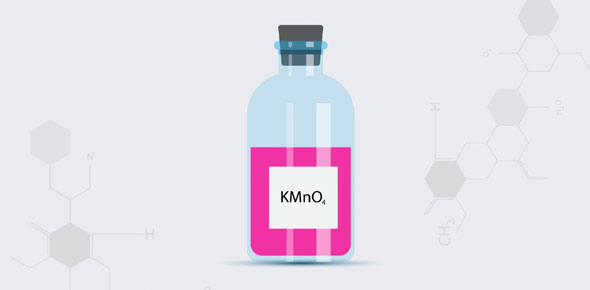Unit 9 - Strength Of Acids And Bases

In chemistry, acids and bases are two types of corrosive substances. The acidity or basicity of a substance is measured with the pH scale. What can you tell us about the strengths of these two corrosives?
- 1.
The strength of an acid or base depends on ______.
- A.
How many hydrogen atoms are contained in each molecule of the acid or base.
- B.
How quickly they form salts when they react with metals
- C.
How completely it ionizes in water
- D.
How many hydroxide groups are on each molecule of the acid or base
Correct Answer
C. How completely it ionizes in waterExplanation
The strength of an acid or base depends on how completely it ionizes in water. When an acid or base ionizes in water, it breaks apart into ions. The more ions that are formed, the stronger the acid or base is considered to be. This is because a higher concentration of ions leads to a higher conductivity of the solution and a stronger acidic or basic behavior. Therefore, the degree of ionization in water is a key factor in determining the strength of an acid or base.Rate this question:
-
- 2.
Which two terms refer to the amount of acid or base dissolved in solution?
- A.
Dilute and concentrated
- B.
Strong and dilute
- C.
Weak and concentrated
- D.
Strong and weak
Correct Answer
A. Dilute and concentratedExplanation
The terms "dilute" and "concentrated" refer to the amount of acid or base dissolved in a solution. A dilute solution has a low concentration of acid or base, meaning there is a small amount of it dissolved in the solution. On the other hand, a concentrated solution has a high concentration of acid or base, indicating that there is a large amount of it dissolved in the solution. Therefore, the correct answer is dilute and concentrated.Rate this question:
-
- 3.
The ______ of solution is a measure of the concentration of hydronium ions in it.
- A.
Concentration
- B.
Indicator
- C.
PH
- D.
Strength
Correct Answer
C. PHExplanation
pH is a measure of the concentration of hydronium ions in a solution. It indicates the acidity or alkalinity of a solution on a scale from 0 to 14, with lower values indicating higher acidity and higher values indicating higher alkalinity. pH is determined by the concentration of hydronium ions, which are formed when water molecules react with hydrogen ions. Therefore, the correct answer is pH.Rate this question:
-
- 4.
Which of the following has the highest pH?
- A.
Pure water
- B.
Vinegar
- C.
Ammonia
- D.
Vitamin C
Correct Answer
C. AmmoniaExplanation
Ammonia has the highest pH among the given options. pH is a measure of the acidity or alkalinity of a solution, with values ranging from 0 to 14. A pH above 7 is considered alkaline or basic. Ammonia is a basic compound and has a pH of around 11-12 when dissolved in water. Pure water has a pH of 7, which is neutral. Vinegar and vitamin C are acidic substances, with vinegar having a pH of around 2.4-3.4 and vitamin C having a pH of around 2.2-2.8. Therefore, ammonia has the highest pH.Rate this question:
-
- 5.
______ are solution containing ions that react with acids or bases to minimize their effects.
- A.
Buffers
- B.
Enzymes
- C.
Indicators
- D.
Hydroxides
Correct Answer
A. BuffersExplanation
Buffers are solutions that contain ions that react with acids or bases to minimize their effects. They work by maintaining a relatively constant pH level in a solution, even when small amounts of acid or base are added. This is achieved through a combination of weak acids and their conjugate bases, or weak bases and their conjugate acids, which can accept or donate protons to maintain the pH. Buffers are commonly used in biological and chemical laboratories to maintain the stability and control the pH of solutions during experiments.Rate this question:
-
- 6.
In chemical equations describing ionization, what do double arrows pointing in opposite directions indicate?
- A.
The reaction rate is doubled.
- B.
There is twice as much product as reactant.
- C.
The reactant is a strong acid.
- D.
The ionization reaction is incomplete.
Correct Answer
D. The ionization reaction is incomplete.Explanation
The double arrows pointing in opposite directions in a chemical equation indicate that the ionization reaction is incomplete. This means that only a fraction of the reactants have been converted into products, and the reaction has not reached equilibrium.Rate this question:
-
Quiz Review Timeline +
Our quizzes are rigorously reviewed, monitored and continuously updated by our expert board to maintain accuracy, relevance, and timeliness.
-
Current Version
-
Mar 21, 2023Quiz Edited by
ProProfs Editorial Team -
Jan 10, 2013Quiz Created by
Haszshe
 Back to top
Back to top


